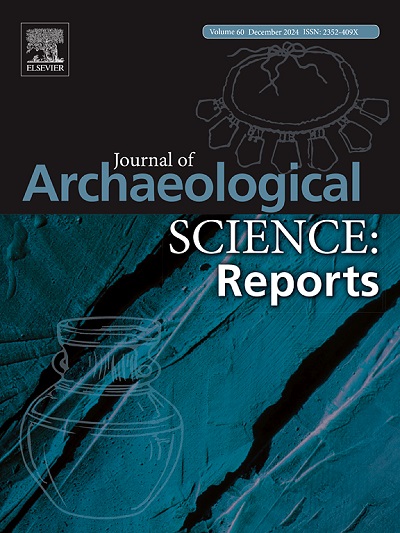What is a good shape? Analysing variability in early Neolithic spherical vessels from Kuyavia (Poland) using geometric morphometrics
IF 1.5
2区 历史学
0 ARCHAEOLOGY
引用次数: 0
Abstract
The pottery of the first Central European farmers associated with the LBK is remarkably homogeneous: most vessels belong to a typologically single form of the so-called spherical vessels. The paper presents the application of geometric morphometrics combined with further explanatory data analysis such as redundancy analysis to investigate the morphological differentiation within this group and the factors that influenced it. Kuyavia in the Polish lowlands was used as a case study and compared with the upland loess regions of Silesia and western Lesser Poland as potential areas of origin and contact of the Kuyavian LBK communities. The variation in the shapes of spherical vessels concerns mainly the proportion of height and width, as well as the degree of openness of the rim and the width of the vessel base. In the early phase, LBK vessels are homogeneous throughout the study area, their shape depends on the ware group, which may be related to different functions of the vessels. Over time, these differences blur, while regional variability becomes important. Within Kuyavia, two groups are visible: eastern and western. Regionalisation, visible in the shape of vessels, does not correlate with the pottery decoration, which is homogeneous for the whole of Kuyavia. The observed differences are probably an expression of various learning networks and therefore different groups, which, however, shared a common identity expressed in pottery decoration.
什么是好形状?利用几何形态计量学分析库亚维亚(波兰)新石器时代早期球形器皿的可变性
与浐灞河流域相关的第一批中欧农民的陶器具有明显的同质性:大多数器皿在类型学上属于所谓的球形器皿的单一形式。本文介绍了几何形态计量学与冗余分析等进一步解释性数据分析相结合的应用,以研究这一群体内部的形态分化及其影响因素。本文以波兰低地的库亚维亚(Kuyavia)为个案研究对象,并将其与西里西亚(Silesia)和小波兰西部的高地黄土地区进行比较,后者是库亚维亚枸杞科群落的潜在起源和接触地区。球形器皿形状的变化主要涉及高度和宽度的比例,以及边缘的开阔程度和器底的宽度。在早期阶段,整个研究区域的枸杞科器皿都是同质的,它们的形状取决于器皿群,这可能与器皿的不同功能有关。随着时间的推移,这些差异逐渐模糊,而地区差异变得重要。在库亚维亚(Kuyavia)地区,可以看到两组器物:东部器物和西部器物。从器皿形状上可以看出的地区性与陶器装饰并不相关,因为整个库亚维亚地区的陶器装饰都是相同的。观察到的差异可能是不同学习网络的表现,因此也是不同群体的表现,但这些群体在陶器装饰上具有共同的特征。
本文章由计算机程序翻译,如有差异,请以英文原文为准。
求助全文
约1分钟内获得全文
求助全文
来源期刊

Journal of Archaeological Science-Reports
ARCHAEOLOGY-
CiteScore
3.10
自引率
12.50%
发文量
405
期刊介绍:
Journal of Archaeological Science: Reports is aimed at archaeologists and scientists engaged with the application of scientific techniques and methodologies to all areas of archaeology. The journal focuses on the results of the application of scientific methods to archaeological problems and debates. It will provide a forum for reviews and scientific debate of issues in scientific archaeology and their impact in the wider subject. Journal of Archaeological Science: Reports will publish papers of excellent archaeological science, with regional or wider interest. This will include case studies, reviews and short papers where an established scientific technique sheds light on archaeological questions and debates.
 求助内容:
求助内容: 应助结果提醒方式:
应助结果提醒方式:


